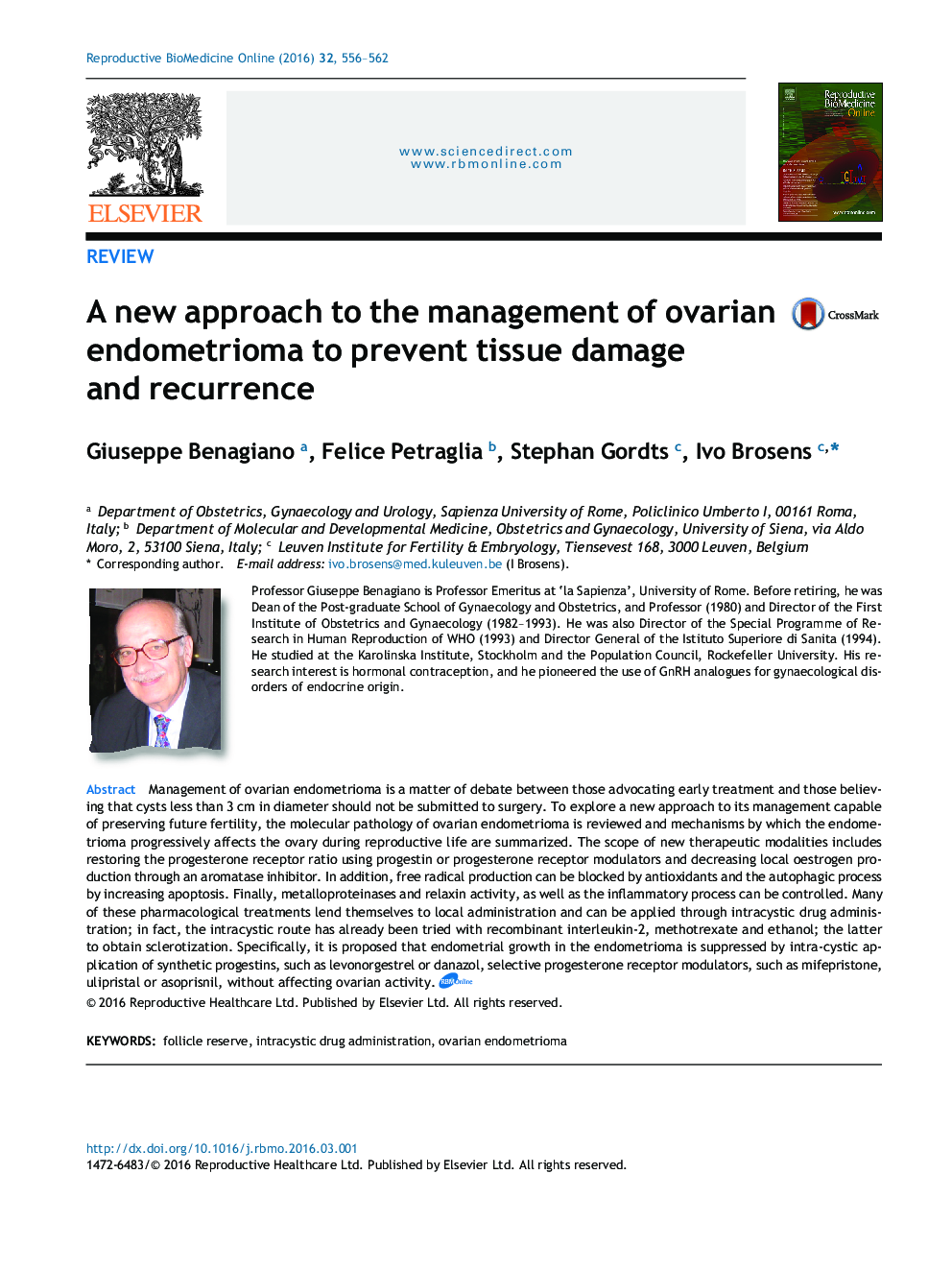| Article ID | Journal | Published Year | Pages | File Type |
|---|---|---|---|---|
| 3969983 | Reproductive BioMedicine Online | 2016 | 7 Pages |
Management of ovarian endometrioma is a matter of debate between those advocating early treatment and those believing that cysts less than 3 cm in diameter should not be submitted to surgery. To explore a new approach to its management capable of preserving future fertility, the molecular pathology of ovarian endometrioma is reviewed and mechanisms by which the endometrioma progressively affects the ovary during reproductive life are summarized. The scope of new therapeutic modalities includes restoring the progesterone receptor ratio using progestin or progesterone receptor modulators and decreasing local oestrogen production through an aromatase inhibitor. In addition, free radical production can be blocked by antioxidants and the autophagic process by increasing apoptosis. Finally, metalloproteinases and relaxin activity, as well as the inflammatory process can be controlled. Many of these pharmacological treatments lend themselves to local administration and can be applied through intracystic drug administration; in fact, the intracystic route has already been tried with recombinant interleukin-2, methotrexate and ethanol; the latter to obtain sclerotization. Specifically, it is proposed that endometrial growth in the endometrioma is suppressed by intra-cystic application of synthetic progestins, such as levonorgestrel or danazol, selective progesterone receptor modulators, such as mifepristone, ulipristal or asoprisnil, without affecting ovarian activity.
